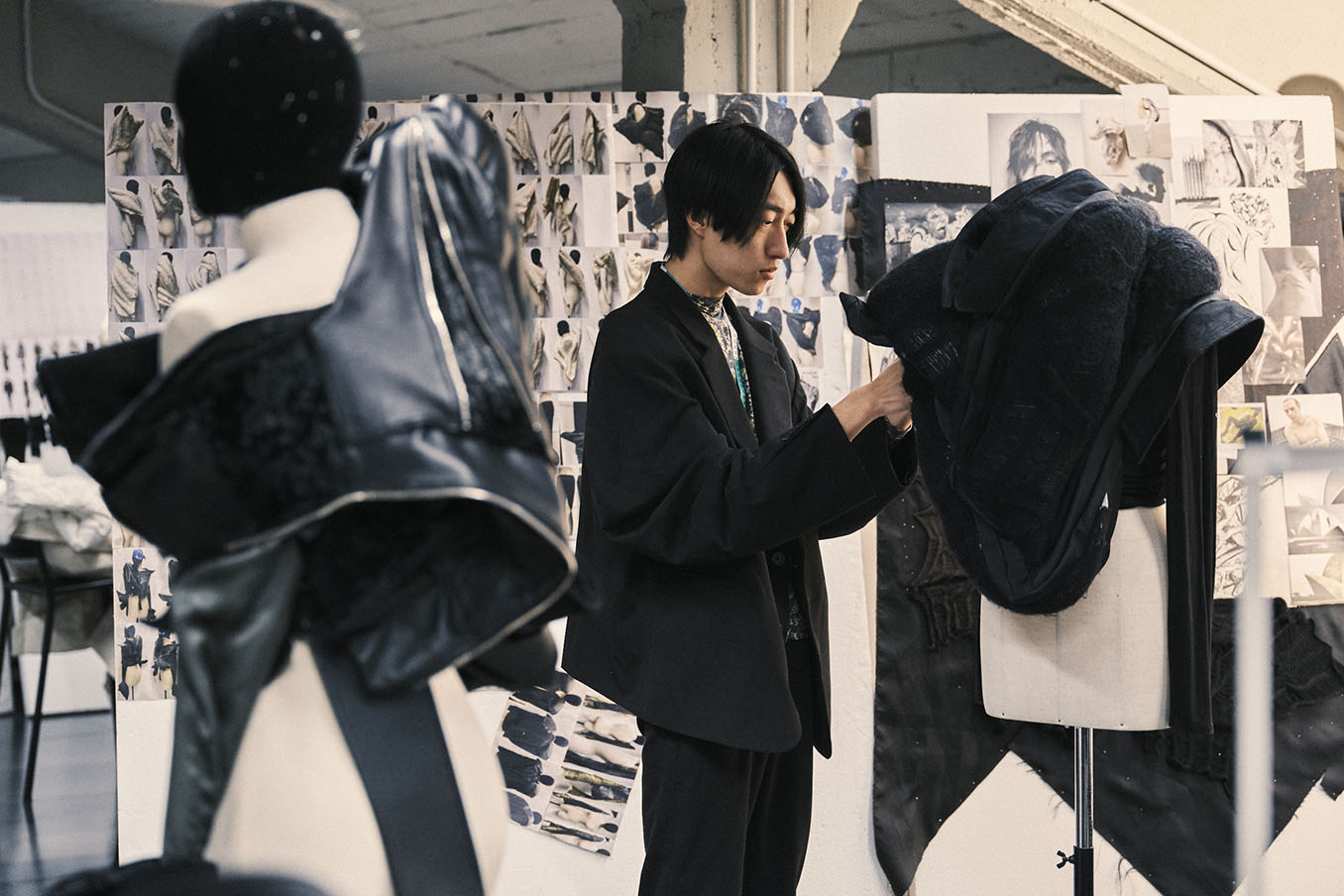A heaving Aula Magna. 8 minutes of silence. Collective storytelling on a shared piece of paper, folded 100 times and passed through the crowd. This is creativity, Francesco Risso style.
This was a guest lecture of different sorts, The Process as Manifesto. Francesco Risso, Creative Director of Marni and former Polimoda student, took on hundreds of students, challenging their creative impetus, breaking the status quo not only of what a lecture should be, but of how we can approach creating and making, and more importantly, how we can do it together.
We sit in silence, to contemplate and connect with any sounds or sensations that come our way, any movement, the sound of peers breathing, coughing. We are then divided into three groups; Wolves, Tulips and Tears. Each group is given a sheet of paper on which each person is to write phrases or words, fold over their section and pass it on. Risso collects them, reads some of them out. Some phrases are emotional, others witty and whimsical, “we are in a room with no tulips, no plants, no sunlight, but full of life”.
“It’s interesting that I couldn’t hear any sounds outside of this room”, he says, as if contemplating the contained bubble that the hall was at that moment, “creativity can feel challenging or blocking. It might feel heavy sometimes.” There’s many ways to get out of creative block. He mentions that he had such an experience about a year ago and found his way out by reading Virginia Woolf, citing that she was known to invite friends to her Sussex home with the note, “bring no clothes”, not expecting them to arrive naked, but to simply come as they were. This permeates Risso’s approach at Marni: to remove any structure that feels like a blockage to creativity, deconstructing his team’s method. All images were banned, they completely covered the office in white paper and no mood board was allowed. When all visual reference is stripped away, an immense creative instinct comes in. Similarly, Risso’s goal at Polimoda was to break down any established method to allow for greater creative impulse.
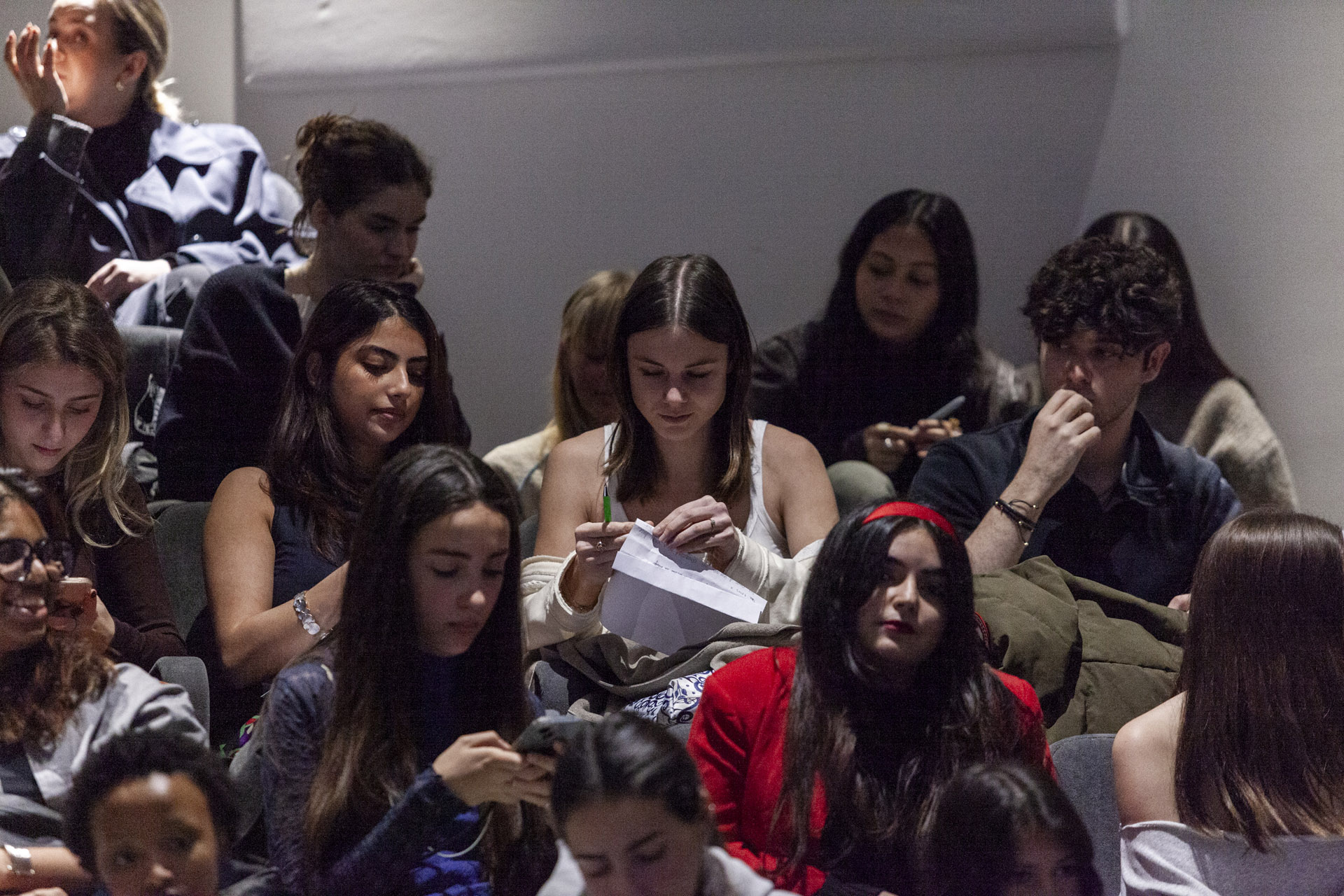
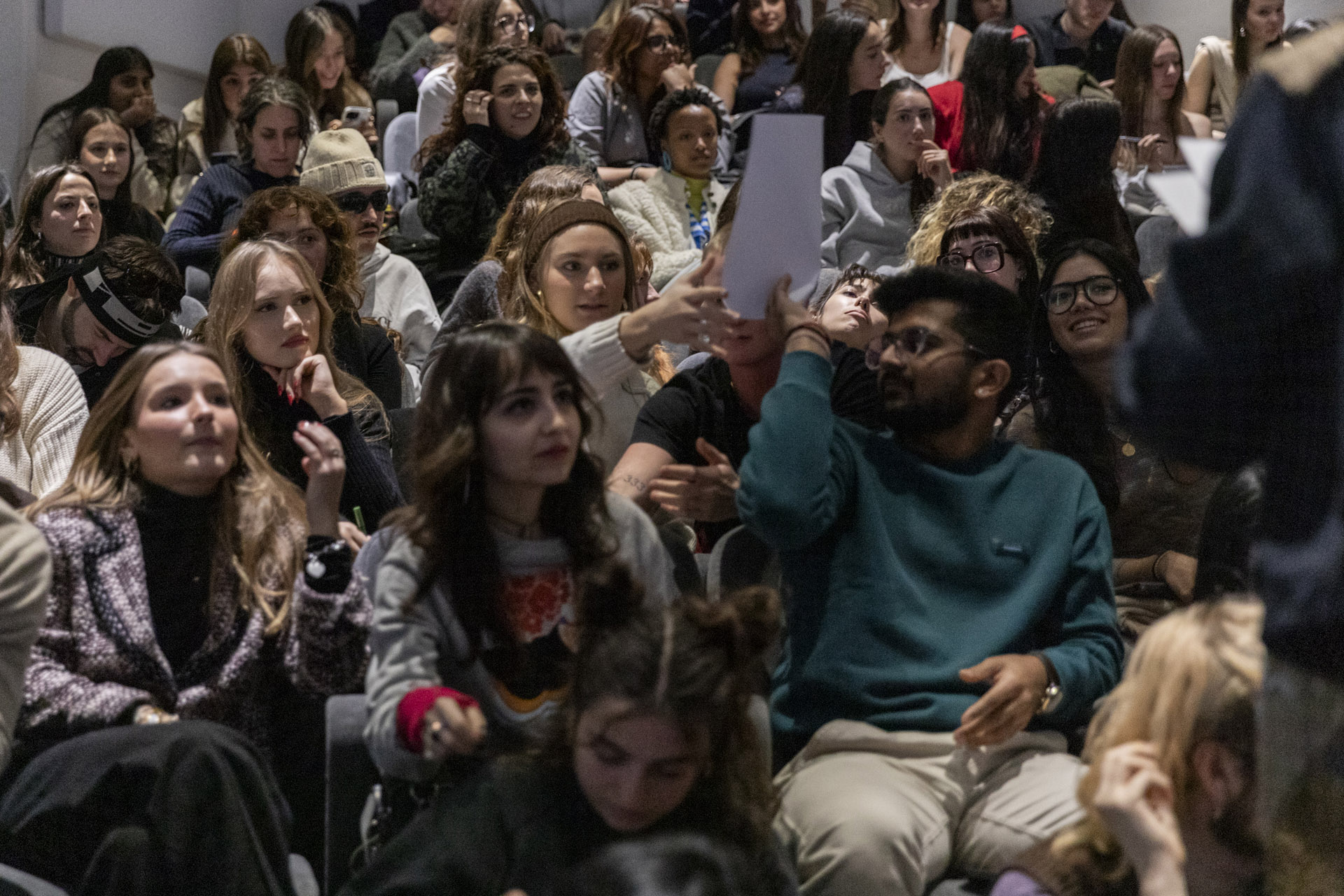
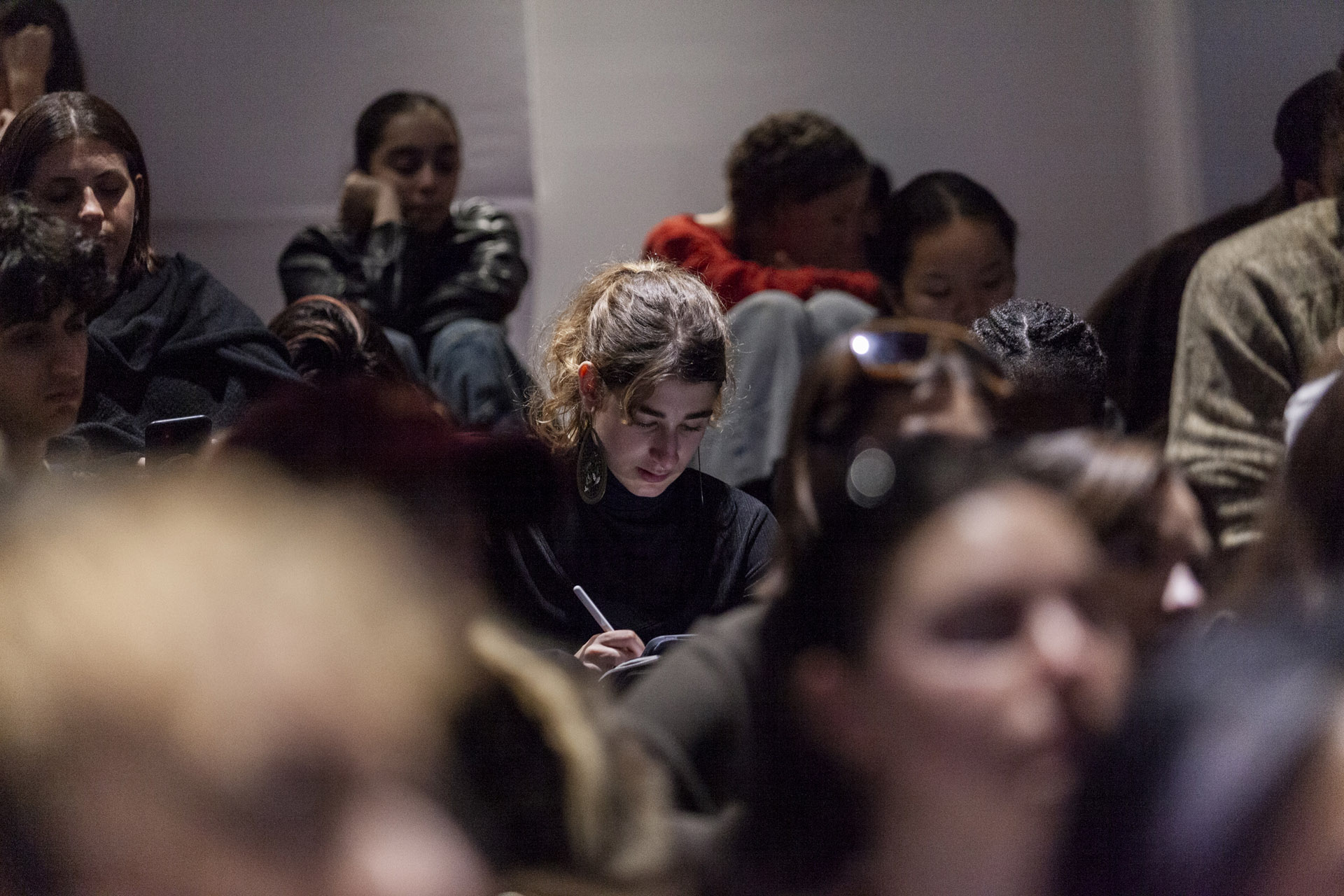
Accompanied by Ileana Giannakoura, Head of Womenswear at Marni and moderated by Tiziana Cardini journalist at Vogue, the afternoon progresses, moving onto discussing Risso’s motivation to enter the fashion world, “at 9 I was making my own clothes, it was my way of expressing my feelings”, alluding to his childhood on a boat in the Mediterranean, surrounded by a big family, in which it was often difficult to make himself heard amongst the creativity and extroversion. This outsider perspective is paramount to his vision and his team’s creations at Marni. It has followed him throughout his career, even during a ten year stint at powerhouse Prada from 2006 – 2016; “I have always been the disruptor, even in places where I worked with incredible people and methods, I always went against the grain.”
Marni’s approach to craft involves a lot of trepidation and discussion, “we are always questioning what we do and how we do it.” Giannakoura continues, “we try to make do with what we have at Marni.” Often the most creative moments come out of limitation; when they covered the office with paper, they decided to staple instead of stitch the clothes together.
The student’s questions for the designer touched on buzzwords like burnout, making yourself heard, work-life balance and working in a “soulless” industry, as well as revealing gems like the creative director’s penchant for playing the cello in his spare time and his reflections on AI; he embraces it as a learning tool but refuses to use it for coming up with ideas, emphasizing that at Marni, the longer a creative process takes, the more satisfying it becomes.
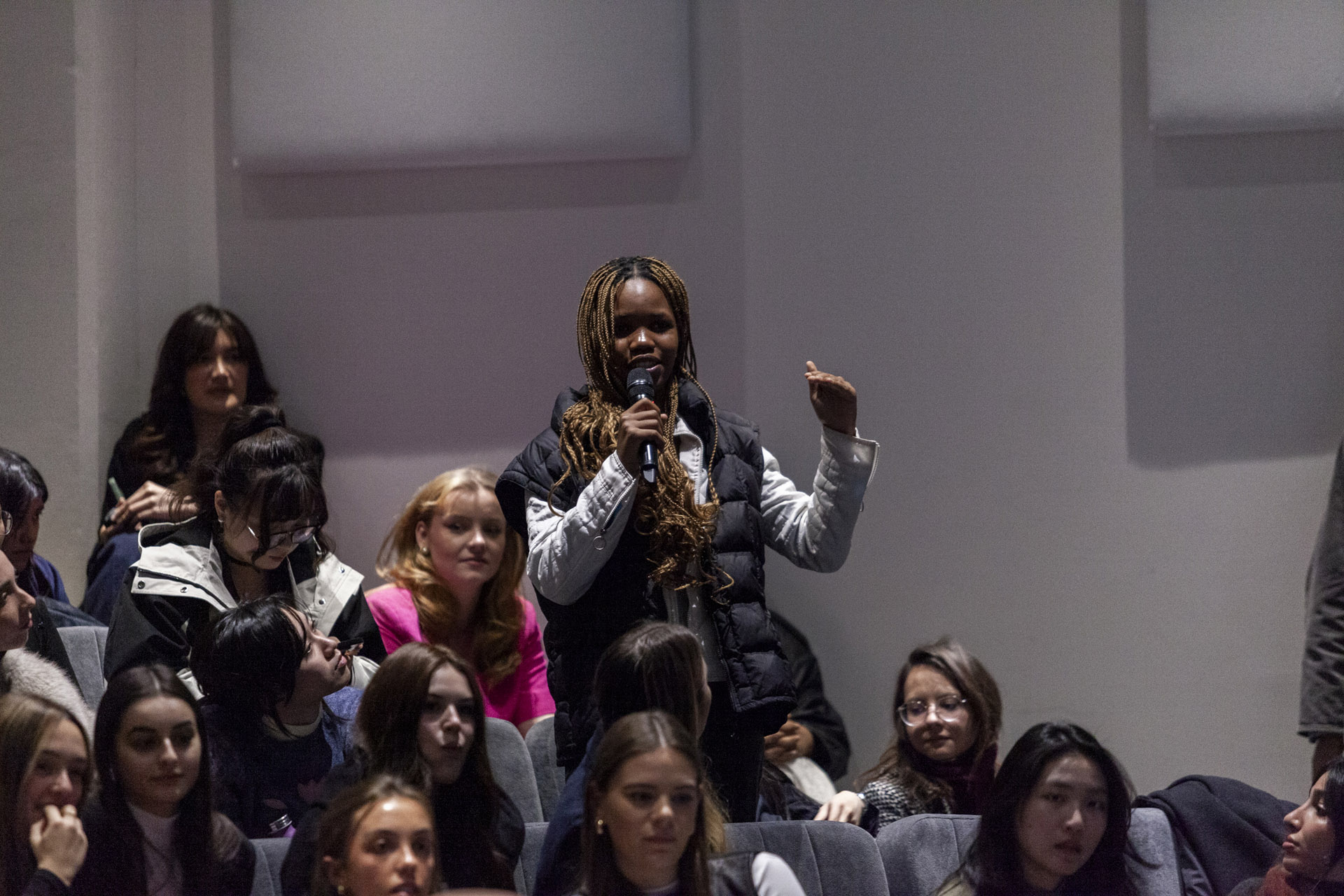
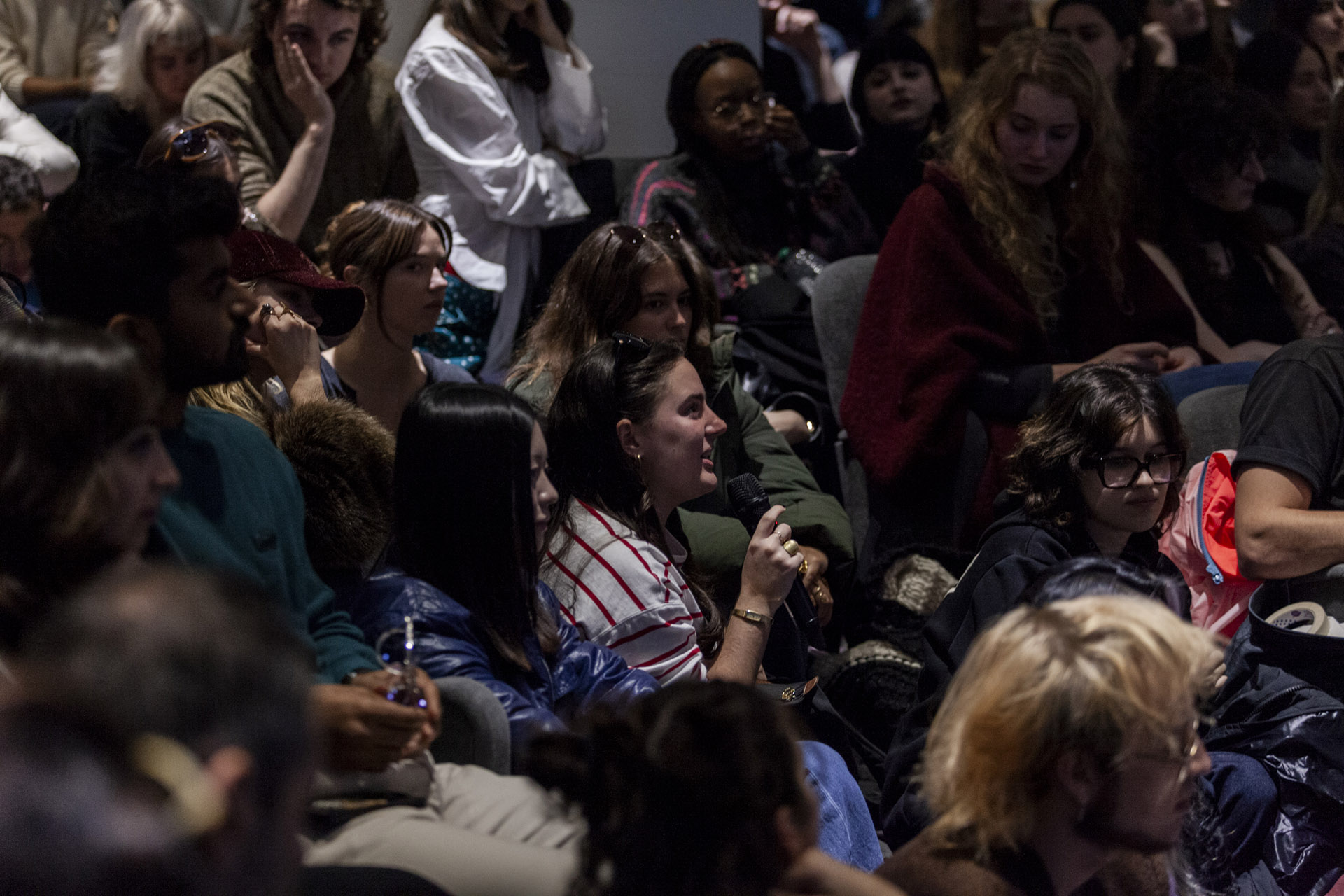
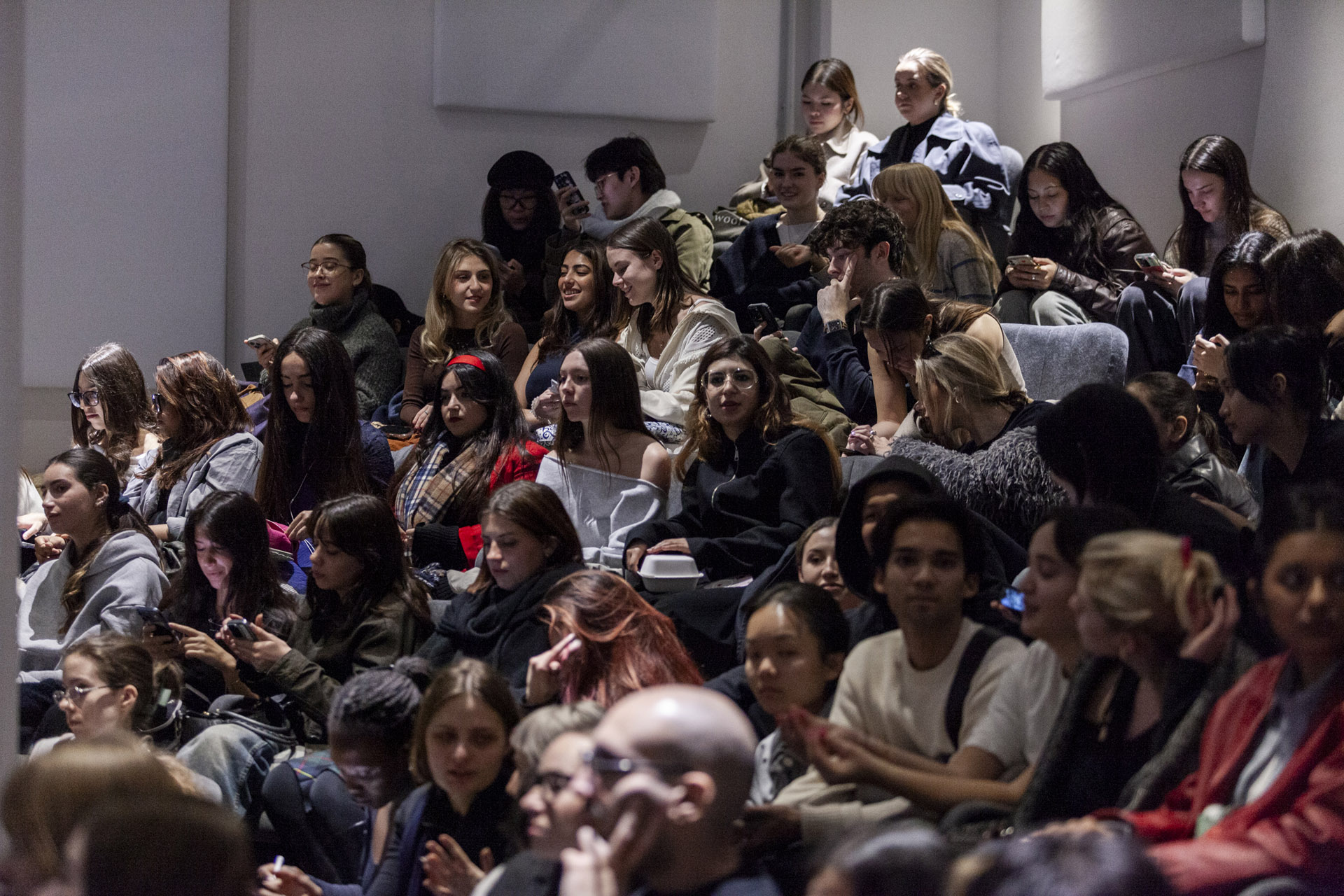
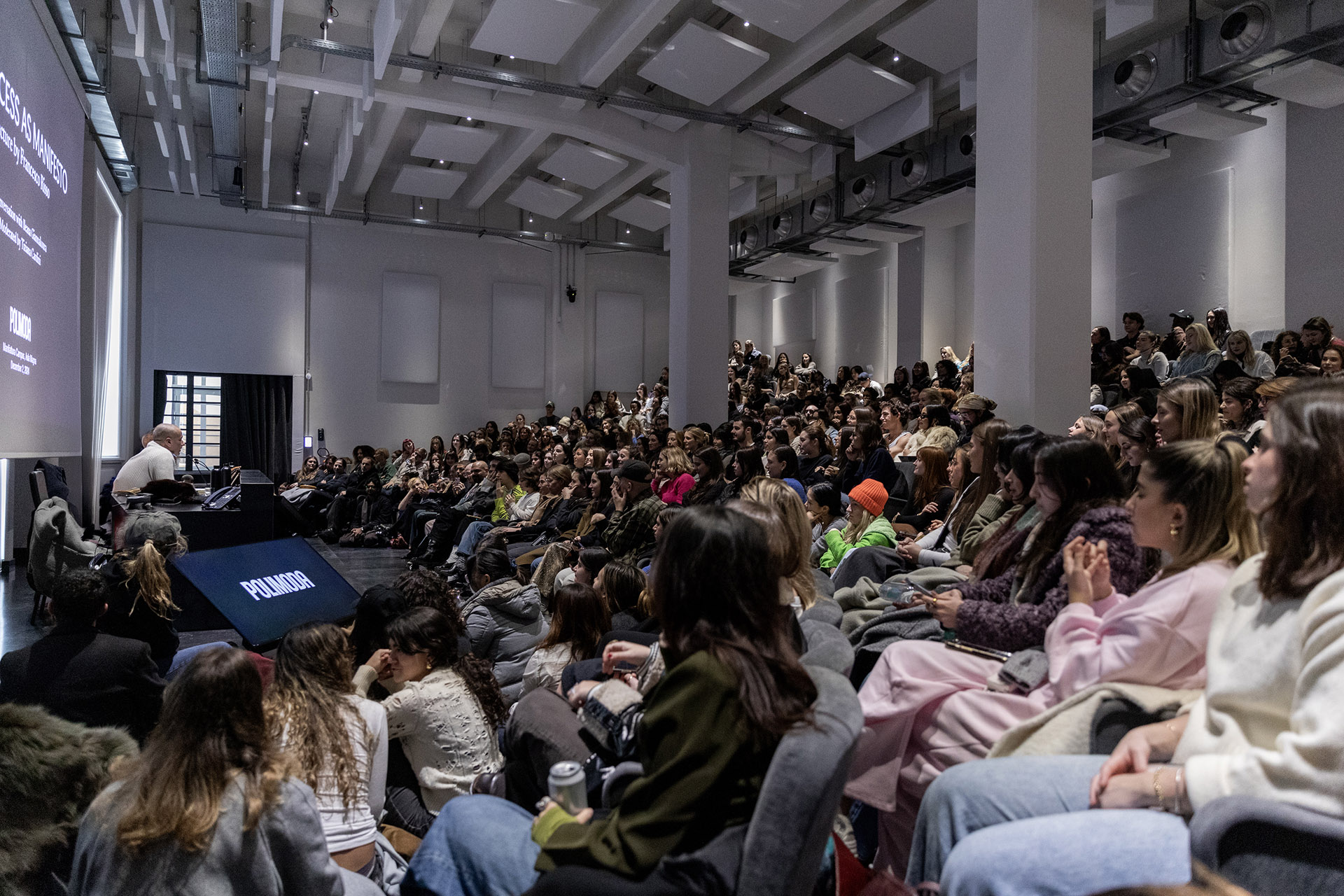
About social media, Risso underlines that it is no longer just about connecting with another person on the other side of the world, but rather who is more successful: “it’s extremely detrimental for who we are, because it has brought metrics into our lives.” His reflection on social media’s effect on the visibility of creatives, due to biased and success based algorithms, is refreshing in its honesty.

For the designer, the pillars of Marni can be defined as “coloring outside of the lines”, his approach characterized by creating daring pieces that challenge conventional taste. His ability to remove himself from typical fashion world canons, to socially observe and break down fixed conventions was apparent and enthralling to the students who are, based on their questions, circumspect and worried about the future. Perhaps Francesco Risso’s philosophy, to aid expression through design that is bold, emotional, and deliberately different from mainstream aesthetics, is the antidote for this cautious and wary generation.


